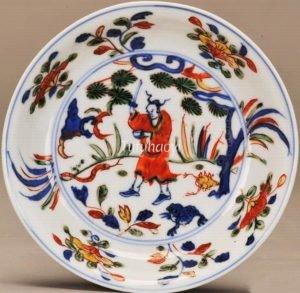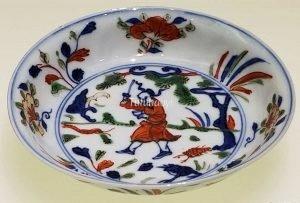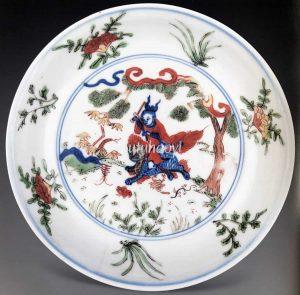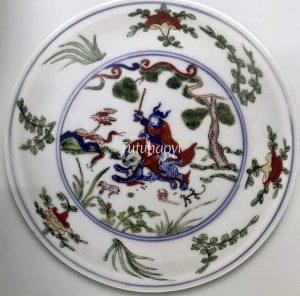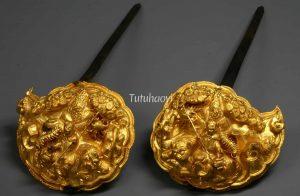Heavenly Master Zhang Quelling the Five Poisons
张天师降五毒
© Tutuhaoyi.com owns the copyright of the description content for the images attached. Quoting all or part of the description content on this page is permitted ONLY IF ‘Tutuhaoyi.com’ is clearly acknowledged anywhere your quote is produced unless stated otherwise. (本页描述内容版权归Tutuhaoyi.com所有,转发或引用需注明 “Tutuhaoyi.com”, 侵权必究, 已注开源信息的条目除外。)
In traditional Chinese customs, the fifth day of the fifth month of the lunisolar calendar is regarded as one of the most dangerous days of the year when evil spirits and hazardous creatures lurked around. Notably, five noxious creatures were identified, known as ‘Five Poisons (五毒 wǔ dú)’. Initially, they are the centipede, the lizard, the scorpion, the snake, and the toad.
In order to deal with the hazards and quell the evil spirits more effectively, the exorcising power was personified as a ‘heavenly master’, often riding a tiger. A Dream of Sorghum (梦梁录 Mengliang Lu), an account of the daily-life in the capital Lin’an (臨安, modern-day Hangzhou 杭州) during the Southern Song dynasty (南宋, 1127-1279) is one of the earliest sources to mention the ‘Heavenly Master Zhang (张天师)’ as a Duanwu festival (端午节) decoration. An effigy of him made from calamus or the rice-paper plant would be hung on the lintel, sometimes together with heads of the tiger and other auspicious beasts, to protect the household.
History of the Ming Court (明宫史 Ming Gongshi), a Ming-dynasty book mentions that pictures of the Heavenly Master, or a young deity, or a fairy subduing the Five Poisons with a sword would be framed and hung on the lintel for a whole month, just like the door gods during the Chinese New Year (‘门上悬挂吊屏,上画天师或仙子、仙女执剑降五毒故事’). Such images are now still available on porcelain, metal ornaments, and embroidered fabric.
For further interesting discussions regarding the personified image of the Heavenly Master, please read Dr Yibin Ni‘s blog here.
Fig 1: porcelain dish with underglaze blue and overglaze enamel decoration, Wanli period (1572-1620), courtesy of Palace Museum, Beijing
Fig 2: porcelain dish with underglaze blue and overglaze enamel decoration, Wanli period (1572-1620), courtesy of Nanjing Museum, China
Fig 3: porcelain dish with underglaze blue and overglaze enamel decoration, Wanli period (1572-1620), courtesy of Jingdezhen China Ceramics Museum
Fig 4: porcelain dish with underglaze blue and overglaze enamel decoration, Wanli period (1572-1620), courtesy of the National Museum of China
Fig 5: porcelain dish with underglaze blue and overglaze enamel decoration, Wanli period (1572-1620), courtesy of Museum für Kunst und Gewerbe Hamburg
Fig 6: a pair of hair pins, Ming dynasty (1368-1644), courtesy of Suzhou Museum, China
Fig 7: wood-block print, Qing dynasty (1644-1911), Taohuawu, Suzhou, Jiangsu

